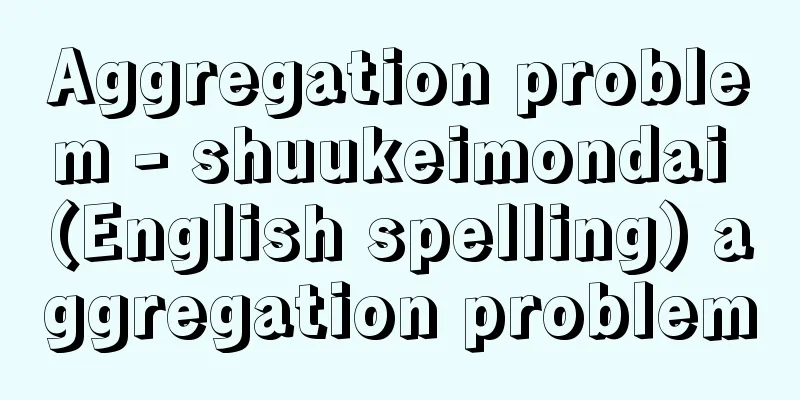Mortgage - Neteitou

|
A mortgage that "secures unspecified claims within a certain range up to a maximum amount" is called a root mortgage (Civil Code Articles 398-2 to 398-22). For example, credit transactions are conducted continuously and frequently between wholesalers and retailers, and between banks and companies. The buying and selling of goods, the lending of money, payments of purchases and repayment of loans are conducted continuously, and individual claims arise and disappear accordingly. In such cases, if a wholesaler or bank tries to secure claims by establishing a normal mortgage, the mortgage will disappear as each individual claim disappears, and the wholesaler or bank will have to establish a mortgage every time each individual claim arises. In order to avoid such an inconvenient outcome, the root mortgage was used as a trading practice. In other words, mortgages were established to secure many claims that would arise in the future in continuing transactions, as long as the total amount of the claims did not exceed a certain amount. This type of mortgage is contrary to the nature of an ordinary mortgage in that it secures future claims and does not disappear when individual claims are extinguished. In the past, the validity of root mortgages was disputed, but case law has recognized their validity. In 1971, the Civil Code was partially revised to add Articles 398-2 to 398-22, and there are now explicit provisions regarding root mortgages. A root mortgage differs from an ordinary mortgage in that it does not secure a specific claim and that the amount of the secured claim is not fixed but fluctuates, but in other respects it is the same as an ordinary mortgage. However, based on the above differences, a root mortgage is treated specially. First, the claim arising from the transaction that will be secured, in other words, the scope of the secured claim, must be decided in advance by contract (called the root mortgage contract) (Civil Code Article 398-2, Paragraph 2). Second, the total amount of the claim secured by the root mortgage (called the maximum amount) must be decided in the contract. These are matters that must be decided in the root mortgage contract and require registration (Real Estate Registration Act Article 88, Paragraph 2, Item 1). The third is the confirmation of the root mortgage. A root mortgage provides that the creditor receives priority payment when the debt is not repaid, but the amount of the priority payment cannot be determined unless it is determined which creditor can receive priority payment. Therefore, the system of confirmation of the root mortgage determines the creditor's time and date of the credit secured by the root mortgage. When a root mortgage is confirmed through this system, it is basically no different from an ordinary mortgage. Therefore, the nature of a root mortgage differs greatly before and after its confirmation. It is important when a root mortgage is confirmed, and the parties can specify the date of confirmation in the root mortgage establishment contract (Civil Code Article 398-6). When this is specified, registration is required (Real Estate Registration Law Article 88, Paragraph 2, Item 3). The parties can also leave the date of confirmation unspecified. In such cases, the mortgage will be determined by a final claim of the parties (Civil Code Article 398-19) or by statutory grounds (Civil Code Article 398-20). [Yasuyuki Takahashi and Masamitsu Nozawa] [Reference] | |Source: Shogakukan Encyclopedia Nipponica About Encyclopedia Nipponica Information | Legend |
|
「一定の範囲に属する不特定の債権を極度額の限度において担保する」抵当を根抵当という(民法398条の2~398条の22)。たとえば、問屋と小売商との間や銀行と企業との間では、信用取引が継続的かつ頻繁に行われている。商品の売買や金の貸付、代金の支払いや借入金の返済が継続的に行われ、それに応じて個々の債権は発生したり消滅したりしている。このような場合に、問屋や銀行が普通の抵当権を設定して債権を担保しようとすれば、個々の債権が消滅するにしたがって抵当権は消滅するから、個々の債権が発生するごとに問屋や銀行は抵当権を設定しなければならないことになる。このような不便な結果を回避するために、取引の慣行として行われていたものが根抵当権である。 すなわち、継続的な取引において将来生じるであろう多数の債権を、債権額の合計が一定の額を超えない限度において担保する抵当権が設定されるようになった。このような抵当権は、将来の債権を担保するものであり、また、個々の債権が消滅してもそれに伴って消滅することがないという点において、普通の抵当権の性質に反するものである。そこで、かつては、根抵当権が有効であるか否かが争われたが、判例はその有効性を認めてきた。1971年(昭和46)に民法が一部改正されて第398条の2から第398条の22までの条文が追加され、現在では根抵当につき明文の規定が置かれている。 根抵当権は、特定の債権を担保するわけでない点、および、被担保債権の額が一定でなく変動するものである点において、普通の抵当権と異なるが、そのほかの点については普通の抵当権と異なるものでない。しかし、前述の差異に基づいて根抵当権は特別に扱われる。第一に、どのような取引によって生じた債権が担保されるのか、つまり被担保債権の範囲を契約(根抵当権設定契約という)であらかじめ決めておかなければならない(民法398条の2第2項)。第二に、根抵当権によって担保される債権の総額(極度額という)を契約で決めておかなければならない。これらは、根抵当権設定契約においてかならず定められなければならない事項であり、かつ、登記を必要とする(不動産登記法88条2項1号)。 そして第三は、根抵当権の確定である。根抵当権は、債務が弁済されないときに債権者が優先弁済を受けることを内容とするが、どの債権につき優先弁済を受けることができるのかを確定しないと、債権者が優先弁済を受ける額が定まらない。そこで、根抵当権の確定という制度により、根抵当権が担保する債権はどの時点での債権であるか、その債権が確定される。この制度により根抵当権が確定されると、その根抵当権は普通の抵当権と基本的には異ならないようになる。したがって、根抵当権はその確定の前後において性質を大きく異にする。根抵当権がいつ確定されるかは重要なことであり、当事者は、確定の日を根抵当権設定契約で定めておくことができる(民法398条の6)。これを定めたときには、登記を必要とする(不動産登記法88条2項3号)。また、当事者は、確定の日を定めないままにしておくこともできる。このときには、根抵当権は、当事者の確定請求(民法398条の19)または法定の事由によって確定する(民法398条の20)。 [高橋康之・野澤正充] [参照項目] | |出典 小学館 日本大百科全書(ニッポニカ)日本大百科全書(ニッポニカ)について 情報 | 凡例 |
>>: Heat flow meter - Heat flow meter
Recommend
African oral literature
…In contrast to ordinary literary works, which ha...
Rosa centifolia (English spelling) Rosacentifolia
…[Naruhashi Naohiro]. . … *Some of the terms that...
Tirana (English spelling)
The capital of Albania. It is located on the banks...
Wolffian duct
It is an excretory duct from the mesonephros, als...
Watching
The enjoyment of watching things closely. In parti...
heliaia (English spelling)
…The 6,000 were divided into 10 groups of 500 eac...
Substrate - Kiban (English spelling)
A plate-like object on or within which active elem...
Lusitania (passenger ship) (English name) Lusitania
…It was a four-shaft ship with a length of 231.6m...
Gausha Grassland
...The first type is most of the state of Rio Gra...
Chaetodontidae
...It is good to keep them in groups. (2) Chaetod...
Kinka - Kinka
…His given name was Shunmin or Seimin, his childh...
Tithe - English spelling: tithe
Taxation of a certain amount of income was widely...
New method of paying old debts
...He left behind a wide variety of plays in diff...
Gorsachius melanolophus (English spelling)
… [Hiroyuki Morioka]. … *Some of the terminology ...
De Coster, C.
...It is also a great satire, with a clown as the...









